#hemp cloth
Text
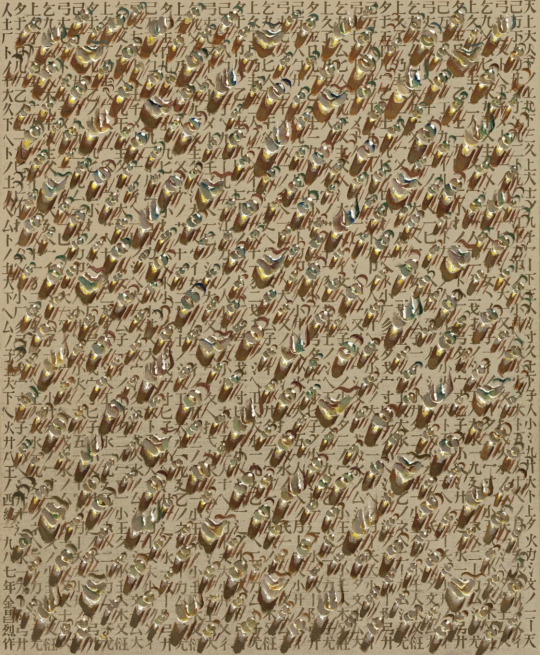
Kim Tschang-Yeul: Water Drops, 'SH87033' (1986)
#kim tschang yeul#kim tschang yeul archive#water drops#SH87033#1986#paintings#illustrations#hemp cloth#korea
156 notes
·
View notes
Text
Snuggle Into Hemp Dreamland
Be Part Of The Eco-Friendly Revolution
Embracing Hemp Bedding for a Sustainable Sleep Experience
Written By Casper Leitch
In a world where environmental consciousness is paramount, every choice we make matters. From the food we eat to the clothes we wear, consumers are increasingly seeking out Eco-friendly alternatives that minimize harm to the planet. When it comes to our sleep environment, one often overlooked yet crucial aspect is bedding. Enter hemp bedding—a sustainable, luxurious, and environmentally conscious choice that's revolutionizing the way we sleep. In this comprehensive guide, we'll delve deep into the world of hemp bedding, exploring its benefits, debunking myths, and uncovering why it's the ultimate choice for the trending Eco-conscious consumer.
Understanding Hemp Bedding
Before we dive into the myriad benefits of hemp bedding, let's start by understanding what hemp is and how it's transformed into the cozy sheets and pillowcases that adorn our beds. Hemp, a versatile and resilient plant, has been cultivated for thousands of years for its myriad uses, ranging from textiles to food and even building materials. Unlike its notorious cousin, marijuana, hemp contains minimal levels of THC—the psychoactive compound—making it perfectly legal and safe for industrial use.
The process of transforming hemp fibers into soft, breathable bedding begins with harvesting the hemp plants. Once harvested, the fibers undergo a series of processing steps, including retting, breaking, scutching, and combing, to extract the long, strong fibers that will eventually be spun into yarn and woven into fabric. The result? Luxuriously soft bedding that rivals traditional materials like cotton in comfort, while surpassing them in sustainability.
The Environmental Impact of Hemp Bedding
One of the most compelling reasons to choose hemp bedding is its minimal environmental footprint. Unlike conventional materials like cotton, which require vast amounts of water, pesticides, and chemical fertilizers, hemp is a low-impact crop that thrives with minimal intervention.
Hemp's rapid growth cycle, typically 12-16 weeks, means it requires far less water to cultivate compared to thirsty crops like cotton. Additionally, hemp has natural pest-resistant properties, eliminating the need for harmful pesticides that can pollute soil and waterways. By opting for hemp bedding, consumers are not only reducing their carbon footprint but also supporting sustainable farming practices that prioritize environmental stewardship.
The Benefits of Hemp Bedding for Sleep Quality
Let's delve into the practical benefits of hemp bedding for sleep quality and overall well-being.
First and foremost, hemp bedding boasts natural temperature-regulating properties that ensure a comfortable sleep environment year-round. Whether you're battling sweltering summer nights or chilly winter evenings, hemp's unique ability to wick away moisture and regulate body temperature ensures a restful night's sleep without the need for excessive layers or bulky blankets.
Furthermore, hemp bedding is naturally hypoallergenic and antibacterial, making it an ideal choice for those with sensitive skin or allergies. Unlike synthetic materials that can trap dust mites and allergens, hemp's antimicrobial properties help keep your bedding fresh and clean, reducing the risk of allergic reactions and skin irritations.
Additionally, hemp bedding is renowned for its durability and longevity. Thanks to its robust fibers, hemp bedding can withstand frequent washing and everyday wear, ensuring that your investment lasts for years to come. Say goodbye to faded, worn-out sheets and hello to bedding that retains its softness and integrity wash after wash.
Debunking Myths and Misconceptions
Despite its growing popularity, hemp bedding is still shrouded in myths and misconceptions. Let's take a moment to debunk some of the most common myths surrounding hemp bedding and set the record straight.
Myth #1: - Hemp bedding is rough and uncomfortable.
Reality: Contrary to popular belief, hemp bedding is incredibly soft and luxurious, with a texture that rivals traditional materials like cotton or linen. Thanks to advances in textile technology, modern hemp bedding offers the perfect blend of softness and durability for a truly comfortable sleep experience.
Myth #2: - Hemp bedding is difficult to care for.
Reality: While hemp bedding may require slightly different care compared to conventional materials, it's no more difficult to maintain. Most hemp bedding can be machine washed and dried, just like cotton or linen. Additionally, hemp's natural resistance to mold and mildew means it stays fresh longer between washes.
The Future of Hemp Bedding
As we look to the future, the potential for hemp to revolutionize the bedding industry is undeniable. With increasing consumer awareness of environmental issues and a growing demand for sustainable products, hemp bedding is poised to become a mainstream choice for Eco-conscious consumers worldwide.
From luxury hotels to everyday households, hemp bedding is making its mark as a luxurious, sustainable, and environmentally friendly choice for a restful night's sleep. As more companies invest in hemp production and innovation, we can expect to see an even wider range of hemp bedding options available on the market, catering to diverse tastes and preferences.
Hemp bedding represents a paradigm shift in the way we approach sleep and sustainability. By choosing hemp bedding, consumers can enjoy a luxurious sleep experience while reducing their environmental footprint and supporting sustainable farming practices. So why wait? Join the hemp bedding revolution today and sleep soundly knowing you're making a positive impact on the planet
Where 2 Shop 4 Home Bedding Made With Hemp.
You can find stylish home essentials made with hemp at Macy’s.
You can find stylish home essentials made with hemp at Ettitude.
You can find stylish home essentials made with hemp at Bloomingdale’s.
You can find stylish home essentials made with hemp at Bed, Bath, and Beyond.
youtube
0 notes
Text
Best Eco-Friendly Textiles Solution For Your SS24 Collection
Suvetah's philosophy is "slow and soulful," crafting environmentally friendly textiles that whisper tales of sunshine-kissed fields and whispered promises to the planet. Because SS24 isn't just about what you wear, it's about who you are. It's about embracing a future where fashion and the planet dance hand-in-hand, where style and sustainability tango under the summer sun. And Suvetah's got the soundtrack for this eco-chic revolution.

Organic cotton remains a reliable go-to for its breathability, comfort, and versatility. Grown without harmful chemicals and pesticides, it uses less water and land, making it a gentle giant in the textile world. Plus, organic cotton comes in a variety of weights and textures, perfect for everything from breezy sundresses to crisp shirting. Look for GOTS (Global Organic Textile Standard) certification to ensure the highest ethical and environmental standards.
2. Hemp: The All-Natural Powerhouse
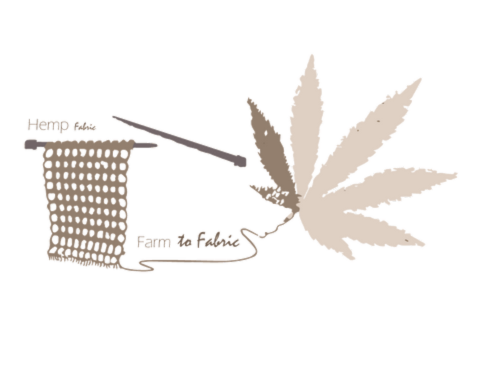
3.Organic Double Gauze: Breathable Bliss

Double gauze deserves a special mention in the sustainable fabric sphere. Made from two layers of lightweight organic cotton loosely woven together, it retains the benefits of cotton- breathable, soft and comfortable while adding a delightful crinkled texture and extra airiness. Think floaty summer dresses, billowy blouses, and ultra-soft baby blankets. Plus, double gauze gets softer with every wash, adding a touch of vintage charm to your wardrobe. Brands like Kokka Fabrics and Vritti Designs offer stunning organic double gauze options in a rainbow of colors, perfect for those breezy summer days
4. Kala Cotton: Natural Beauty with an Eco-Conscious Soul

Hailing from the sun-drenched deserts of Kachchh in Gujrat, India, Kala cotton is more than just a fabric; it's a story woven into every thread. Most people think that this cotton is black because of its name, Kala, which means black in most Indian languages. But its name refers to the boll that remains after extracting the cotton fibre. It will always be pure in form and not like other kinds of cotton, such as regular cotton.
5.Banana fabric
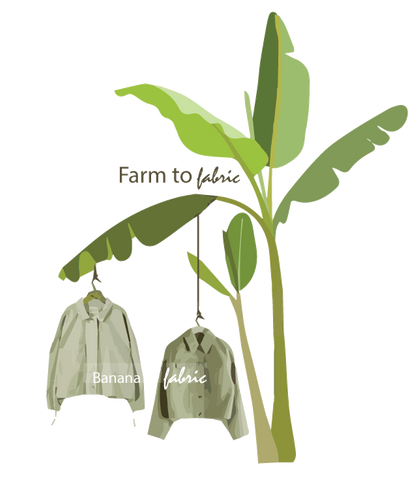
Banana fabric isn't made from the fruit itself, but from the fibers found in the stem and peels of the banana plant. These fibers are surprisingly strong and versatile, making them perfect for weaving into textiles. The process starts by extracting the fibers from the plant, which can be done through various methods depending on the desired result. Once extracted, the fibers are spun into yarn and then woven into fabric.we can expect to see banana fabric become more widely available and used in a variety of clothing and accessories. With its sustainable credentials and unique properties, banana fabric is sure to be a major player in the future of eco-friendly fashion.Share
Back to blog
#organic cotton material#cotton knit fabric#hemp cloth#hemp as fabric#bamboo fabrics#khadi silk material#white fabrics#hemp for clothes#khadi silk cloth#silk khadi fabric#khadi silk fabric#hemp for clothing#ahimsa silk#khadi fabrics#cotton fabrics#sustainable fabric
0 notes
Text
Hemp Clothing India - Weaving Vibes
Weaving Vibes brings the essence of sustainable fashion to India through its exquisite collection of hemp clothing. With the growing popularity of hemp textile, Weaving Vibes stands out among the leading hemp companies in India. Their commitment to eco-friendly practices is reflected in their range of hemp products, which offer style without compromising the environment. Weaving Vibes embraces the versatility of hemp fabric, showcasing its durability and comfort in their designs. Elevating fashion with a conscience, Weaving Vibes is the go-to brand for those seeking ethical and trendy hemp clothing in India. Visit here to check them out https://weavingvibes.com/
0 notes
Text
Best Organic Flats Hemp Jersey for your Baby - Geffen baby
Here Geffen Baby sells the best Flats Hemp Jersey for your baby which is fully organic and our products are not only more durable but also more absorbent.
#Flats Hemp Jersey#hemp cloth#organic diapers#hemp cloth diapers#best cloth diapers#cloth diapers#prefold#geffen baby#baby diapers
0 notes
Text


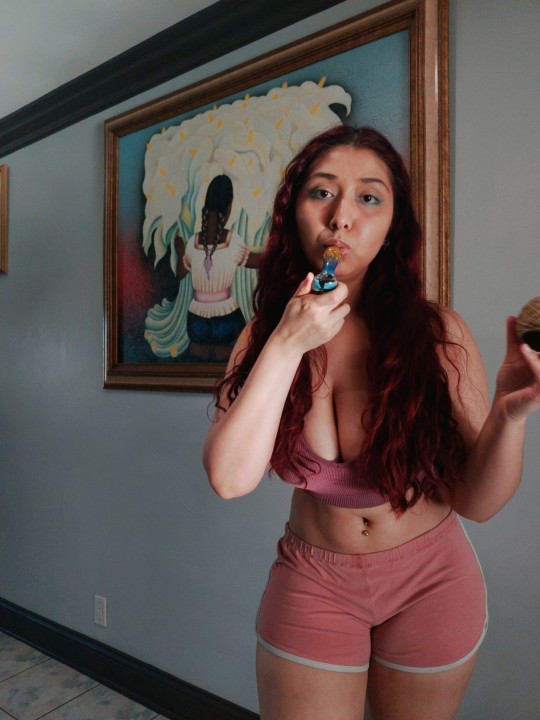
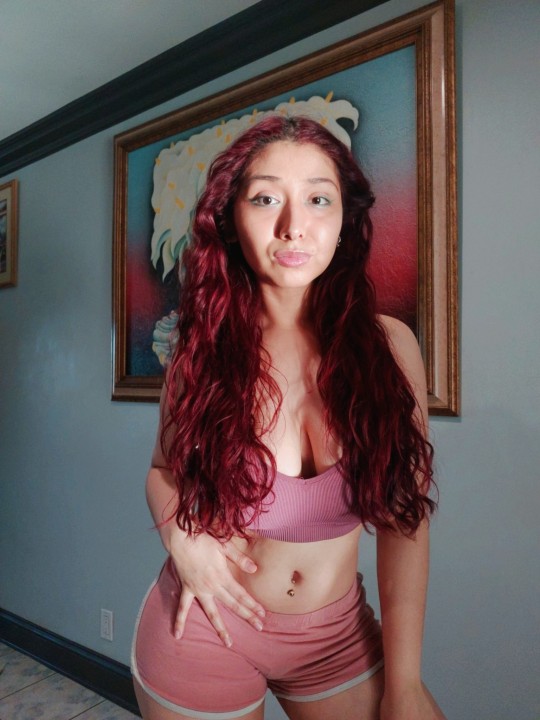
🌺💖🪷💨
#me#after work#cannibalgh0st#my pics#stoner stuff#weed smoke#march#2024#pink vibes#hemp wick#blue eyeliner#sunlight#natural light#belly button piercing#latina#Aquarius#comfy clothes#wavy hair#red hair#weed#bud#medical cannabis
158 notes
·
View notes
Note
Opinions in hemp cloth/fabric? I saw one of your post talking about polyster vs cotton/wool/linen
Hi! Thank you for the question! When I was writing that post/addition, I actually forgot the existence of hemp (not that it's among the most important natural fabrics today (sadly)). And when I went to check some sources to make sure I didn't get things wrong, I learned that cotton also gets stronger when wet, which I had previously learned the other way around. (I had gotten it wrong in that post too.)
Hemp is an amazing material. It's very similar to linen in it's properties, in some regards even better. Like linen it's extremely breathable, so great for hot weather, and antibacterial, so it doesn't smell easily and when against skin, keeps it cleaner too. It has even better water absorption abilities than linen, which is why it doesn't feel wet even when it has absorbed a good amount of sweat or water in general. Like linen (and apparently cotton) it gets stronger when wet too, which makes washing and sanitizing it without damaging it easy. It's also even before getting wet super strong, the strongest plant fiber there is. It even has one ability linen doesn't have (nor most plant fibers) it's UV resistant, adding to it's great abilities for summer use.
One thing I didn't mention in that post about linen, which makes it still very relevant, is that growing linen is so much more ecological than growing cotton, which requires a ton of fresh water. Flax (the plant linen is made of) grows very easily in fairly harsh conditions and doesn't need fertilizers, which are often damaging to the ecosystem. However, hemp does the same and better. It's very resistant to pests, so doesn't need extra pestilence that could have adverse effects to the ecosystem, and unlike most other monocultural farmland, it even enriches the earth, keeping the earth resistant against erosion.
All of these properties are why it was used for sails and ropes for millennia. Its very long and strong fibers allow it to be made into very thick canvas excellent for sails. Hemp canvas was also used for stiff interlining. But it got me thinking, why isn't hemp often talked about in clothing history (except in the fact that it was the first plant fiber to be woven into fabric)? It has such obviously excellent properties, which surely would have been attractive to pre-industrial people with limited resources. After looking around I found couple of explanations.
Hemp was indeed used widely for clothes, especially in rural setting. Since it became the first plant fabric in central Asia, it was the primary fabric for clothing in China till the introduction of cotton around a millennium ago. It was used in Europe too since the Goths introduced it in antiquity. However in historical texts (at least in 16th-18th century) hemp cloth is also often referred to as linen and it can be hard to distinguish if the fabric written about was actually made from hemp or flax, since they did make fairly similar cloth. There was a limiting factor too for more widespread use of hemp, since it's processing into fabric was labour intensive, which got better in Industrial Era, when some of the most labor intensive parts were able to be mechanized. It was though very easy and cheap to grow, and needed especially little attention in summer, when farmers had most work. Because of it's enriching properties it also could be grown in the same plot year after year. For these reasons it was often grown in small quantities within small-scale farming even when large scale farming was becoming more common. It's perhaps where the rural association came from, as it was likely grown for personal household textiles and not for selling.
Though there was of course larger scale farming of it and records of selling it by merchants after feudalism started fading, even if the labour intensive processing made it less profitable. Apparently one of the most popular usages for hemp in clothing was men's shirts, for upper and lower classes. Sailors also often wore hemp clothing as it was so excellent and durable in all the conditions that would come across at sea. Hemp also was not as fine as linen, and while very fine hemp was soft and as linen softens in use and with every wash, it still wasn't quite as soft and fine as linen could be. So especially upper classes, who wouldn't need the maximum practicality and durability, would opt into linen, which was still very practical and durable, but also a bit more comfortable against skin.
At the time, when labour was plentiful and relatively cheap compared to land, hemp was still profitable. Entering the Industrial Era this started to change as industrial production requiring less human labour was much cheaper and therefore left more profit margin, so the capitalists now controlling production would greatly favor materials that could be produced industrially. While the processing of hemp became less labour intensive with mechanization, it was still much more labour intensive than cotton for example, which was the first thing that was industrialized. Hemp production was still fairly wide through 19th century and to early 20th century, even if declining in it's share of the clothing production like all the rest of the natural fabrics (except cotton).
But then the war on drugs happened. Now the hemp typically used for clothing is not exactly the same used for weed (there's different strains and then male and female and it seems complicated and I don't know that much about plants), what I read it doesn't have at least very strong psychoactive qualities unlike those used specifically for weed (though there was some overlap). Of course that didn't stop growing hemp being banned very widely, leading the hemp fabric production to plummet in the latter half of 1900s. Growing hemp has become easier now, but the prohibition still create hurdles for farmers. Which sucks a lot because it's such an amazing material and with modern mechanized processing it's cheap to make (and can be made to be really soft) on top of being excellent quality and gentle to environment.
So I guess my opinion is hemp is great we should make more of it instead of cotton and especially synthetic fibers and legalize weed.
#answers#history#textiles#textile history#fashion history#fashion#clothing history#dress history#fabrics#hemp
145 notes
·
View notes
Text
I just noticed that my country has legalized weed
And I have looked up and my place is in the legal area of planting and smoking weed
4 notes
·
View notes
Text
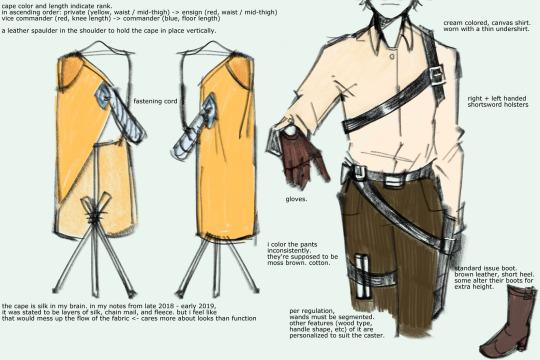
realized my only ref for the petran uniform was over 4 years old, illegible, and never posted. lol
#its my wizard slice of life tragedy i get to choose the impractical uniform#the back of the cape used to have a differnt clasp. but having them match makes it easier to switch the side it hangs on#ghostart#apple core#houndstooth#original#edit: actually the pants should prob be hemp cloth
21 notes
·
View notes
Text
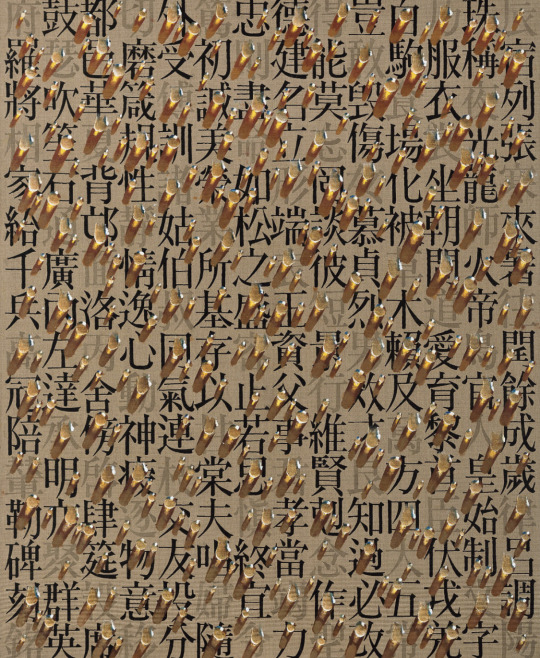
Kim Tschang-Yeul: 'Recurrence' (1994)
162 notes
·
View notes
Text
Hemp In Fashion
Hemp Fashion's Are Leading A Sustainable Revolution!
youtube
The Rise of Hemp in Fashion
Written by Casper Leitch
Hemp fashion is now taking center stage in the garment district. Imagine a fabric that is soft, durable, and versatile, that can be used to make anything from jeans to jackets, from bags to shoes. A fabric that is also Eco-friendly, requiring less water, land, and chemicals than most other fabrics. A fabric that has been used for millennia, but has been banned for decades due to political and social reasons. This fabric is hemp, and it is making a comeback in the fashion industry. This versatile and Eco-friendly fabric is not just a trend; it's a movement towards a greener, more sustainable future.
Hemp, often misunderstood due to its association with marijuana, has a rich history dating back thousands of years. Revered for its robust fibers and myriad uses, hemp was once a staple in textile production and played a vital role in global economies. However, misguided regulations and stigma led to its prohibition, stifling its potential and relegating it to the shadows.
Thankfully, times are changing. As the fashion industry faces increasing scrutiny over its environmental impact, designers and consumers alike are turning to hemp as a solution. Unlike conventional fabrics like cotton, hemp requires minimal water, pesticides, and synthetic fertilizers to thrive. Its deep roots help prevent soil erosion, making it a champion of sustainable agriculture.
Sustainable Eco-friendly Fabrics
One of the most compelling reasons for hemp's resurgence in fashion is its unparalleled sustainability. Traditional textiles like cotton are notorious water guzzlers, consuming vast amounts in cultivation. In contrast, hemp can thrive with minimal irrigation, making it a more Eco-conscious choice in regions prone to drought. Additionally, hemp's rapid growth and high yield per acre make it a highly efficient crop, requiring less land for cultivation compared to other fibers.
Beyond its Eco-friendly credentials, hemp fabric boasts a plethora of desirable qualities that appeal to both designers and consumers. Renowned for its durability, hemp fibers are stronger and more resilient than cotton, ensuring longevity and reducing the need for frequent replacements. Moreover, hemp fabric is naturally breathable and antimicrobial, making it ideal for garments that prioritize comfort and hygiene. From casual wear to high-end fashion, hemp's versatility knows no bounds.
The shift towards hemp in fashion represents more than just a fleeting trend; it signifies a fundamental transformation in the industry's values and practices. By embracing hemp, designers and brands are making a bold statement about their commitment to sustainability and ethical production. This shift isn't just about reducing environmental harm; it's about reimagining the entire fashion ecosystem to prioritize people and the planet over profit.
Breaking Down Barriers
Despite its remarkable potential, the widespread adoption of hemp in fashion faces regulatory hurdles and lingering stigma. By dismantling outdated regulations and fostering education, we can unlock the full potential of hemp and usher in a new era of sustainable fashion. Beyond its environmental benefits, the global hemp market holds immense promise for economic revitalization. Legalizing industrial hemp cultivation can create jobs, stimulate local economies, and reduce reliance on unsustainable practices. From farmers to manufacturers, the hemp industry offers opportunities for growth and innovation that can benefit communities worldwide.
As we look ahead to the future of fashion, one thing is clear: hemp is here to stay. With its unrivaled sustainability, durability, and versatility, hemp has the power to revolutionize the way we produce, consume, and perceive clothing. By embracing hemp as a symbol of progress and possibility, we can build a fashion industry that honors the earth, uplifts communities, and inspires generations to come.
Regenerative Agriculture Practices
In addition to its environmental benefits, hemp cultivation offers an opportunity to promote regenerative agriculture practices that regenerate soil health, enhance biodiversity, and sequester carbon. By incorporating hemp into crop rotation systems and agroforestry models, farmers can improve soil fertility, reduce the need for synthetic inputs, and mitigate the impacts of climate change. Moreover, hemp's deep root system helps break up compacted soil and prevent erosion, making it a valuable ally in the fight against soil degradation and desertification.
As the world grapples with the escalating impacts of climate change, hemp holds promise as a revolutionary tool for carbon sequestration and climate resilience. Unlike traditional crops that deplete soil nutrients and contribute to deforestation, hemp cultivation replenishes the soil and promotes biodiversity, creating resilient ecosystems that can withstand the challenges of a changing climate. By harnessing the power of hemp to sequester carbon and mitigate greenhouse gas emissions, we can combat climate change and safeguard the future of our planet for generations to come.
In addition to its environmental benefits, hemp legalization has the potential to empower marginalized communities and promote social equity. By providing opportunities for small-scale farmers and entrepreneurs, hemp cultivation can create pathways out of poverty and foster economic independence. Moreover, initiatives that prioritize sustainable and fair-trade practices ensure that the benefits of hemp legalization are shared equitably among all stakeholders, promoting social justice and economic empowerment on a global scale.
Education and Awareness
While the benefits of hemp in fashion are undeniable, widespread adoption requires education and awareness among consumers, policymakers, and industry stakeholders. By debunking myths and misconceptions surrounding hemp, we can pave the way for informed decision-making and meaningful change. Additionally, initiatives that promote transparency and traceability in the fashion supply chain empower consumers to make ethical choices and support brands that align with their values, driving demand for sustainable and socially responsible products.
To fully realize the potential of hemp in fashion, collaboration and innovation are essential. By fostering partnerships between designers, manufacturers, policymakers, and advocacy groups, we can drive forward-thinking solutions that prioritize sustainability, inclusivity, and social responsibility. From pioneering new textile technologies to exploring innovative design techniques, the possibilities for hemp in fashion are limitless. By working together to harness the power of hemp, we can build a more resilient, equitable, and sustainable fashion industry that benefits people, the planet, and future generations.
As we navigate the complexities of hemp legalization and advocate for sustainable fashion practices, it's essential to amplify our voices and demand change. By supporting brands that prioritize hemp and advocating for progressive policies, we can accelerate the transition to a more sustainable future. Whether you're a fashion enthusiast, an environmental advocate, or a concerned citizen, your voice matters.
Below is a FREE TO DOWNLOAD marijuana music MP3 by David Kirton.
Green Camouflage.
youtube
0 notes
Text
I don't know why this is a hard concept for people to get but yes you SHOULD care about all your clothing being made from sustainable and biodegradable materials.
#not dogs#sustainability#i love you ethically sourced fur i love you ethically sourced leather#i love you linen and i love you wool#i love you hemp i love you cotton#i don't want to see a single bitch coming into the comments talking about how leather and fur is not needed#especially if you don't live in a cold climate#not people in the comments of that fur farming post talking about#other clothes are made from plastic anyways so why does it matter that faux fur is made from plastic#uh. maybe you should care
63 notes
·
View notes
Text
Hemp has revolutionized the fashion industry!
Introduction:
In recent years, the fashion industry has witnessed a revolutionary shift towards sustainability, driven by a growing awareness of environmental issues and the need for ethical practices. Amidst this wave of change, hemp has emerged as a frontrunner, revolutionizing the fashion scene with its eco-friendly attributes and versatility. Join us on a journey into the world of hemp and discover how it's transforming the fashion landscape.
From Farm to Fabric: The Eco-Friendly Journey of Hemp
Hemp is a low-impact crop that requires minimal water, pesticides, and synthetic fertilizers to thrive. Unlike traditional cotton, which is notorious for its heavy environmental footprint, hemp cultivation contributes to soil health and biodiversity. This section explores the sustainable cultivation practices that make hemp an environmentally friendly choice for conscious fashionistas.
Versatility Unleashed: Hemp's Wide Range of Fashion Possibilities
Gone are the days when hemp clothing meant scratchy, uncomfortable garments. Thanks to technological advancements, hemp can now be transformed into luxurious, soft fabrics that rival the comfort of cotton and linen. Dive into the diverse world of hemp textiles, from breathable summer wear to cozy winter layers, and discover how this versatile material is challenging preconceived notions about sustainable fashion.
Breaking the Mold: Hemp Fashion as a Symbol of Innovation
Hemp fashion is not just about sustainability; it's also a symbol of innovation in design and manufacturing. Explore how designers and brands are pushing the boundaries of creativity, using hemp to create chic and stylish pieces that challenge the notion that eco-friendly clothing has to be bland or uninspiring. The hemp revolution is not just about saving the planet; it's about redefining the aesthetic norms of the fashion industry.
Conclusion:
As the fashion industry navigates its way towards a more sustainable future, hemp stands out as a beacon of hope. This once-overlooked plant is now taking center stage, proving that fashion can be both stylish and environmentally conscious. From its eco-friendly cultivation to its versatile applications and innovative designs, hemp has become a driving force in the sustainable fashion movement.
Embrace the hemp revolution and be a part of a future where fashion not only looks good but also does good for the planet. The era of sustainable, chic hemp fashion has arrived, and it's here to stay.
2 notes
·
View notes
Text
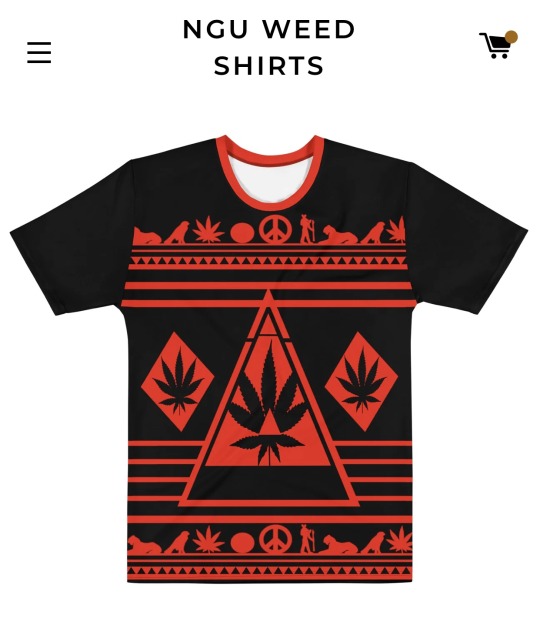
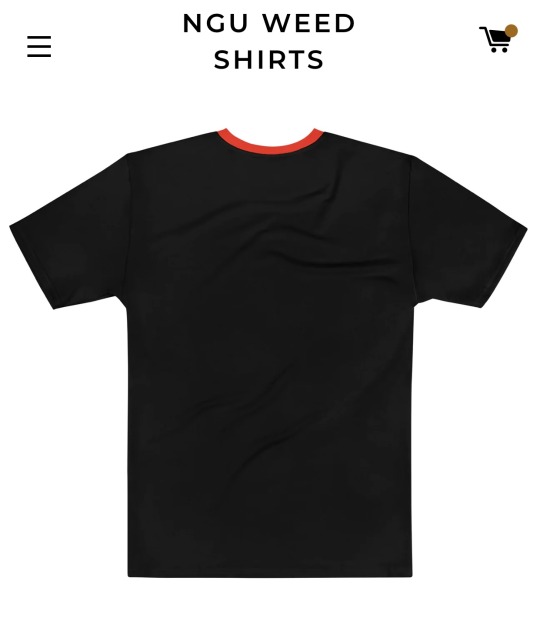
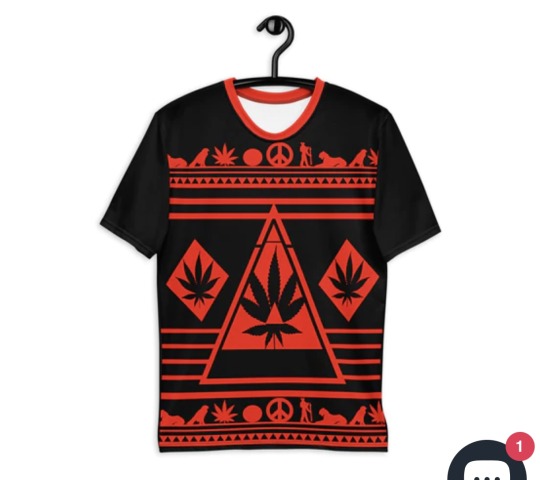
#weed shirts#marijuana#joints#thc#blunts#weed#hightimes#life#420#stoner#hemp clothing#clothing#cannabis#Shirt
2 notes
·
View notes
Text

#fashion#hippie#hippie fashion#hippie dress#hippie clothes#festival#www.patchouli haze.co.uk#fair trade#nepal#cotton#hempproducts#hemp
2 notes
·
View notes
Text
Browse Our Most Comfortable Women's Hemp Clothing Australia
Are you tired of buying cheap clothes? Tantrika is a brand that supports sustainable practices, fair trade and quality garments. The hemp fibres are durable enough for durability but soft enough to feel great against your skin. It wicks moisture from your body like no other fabric, so you never have to worry about feeling sweaty or uncomfortable. Our range of clothes is made from top-quality materials and incorporates the superior properties of hemp fibre. We love that hemp is the only natural fibre that can absorb and release moisture without feeling wet or clammy. Contact us for more details about Women's Hemp Clothing Australia.

#mens shirts online australia#eco friendly clothing australia#women's underwear australia#feather earrings online#crystal lamps australia#organic hemp fabric australia#women's bamboo underwear australia#linen tee womens#bamboo clothing australia online
4 notes
·
View notes